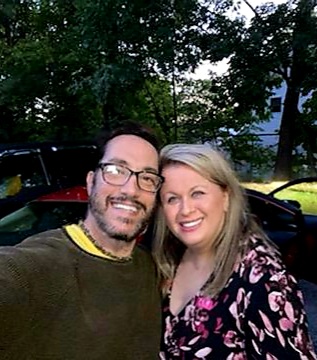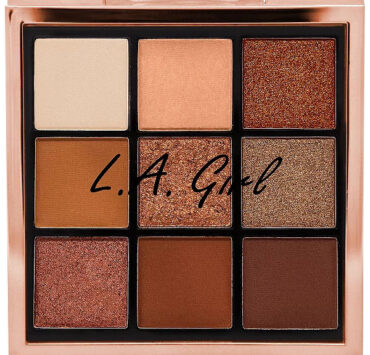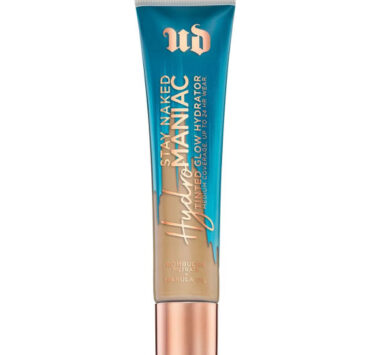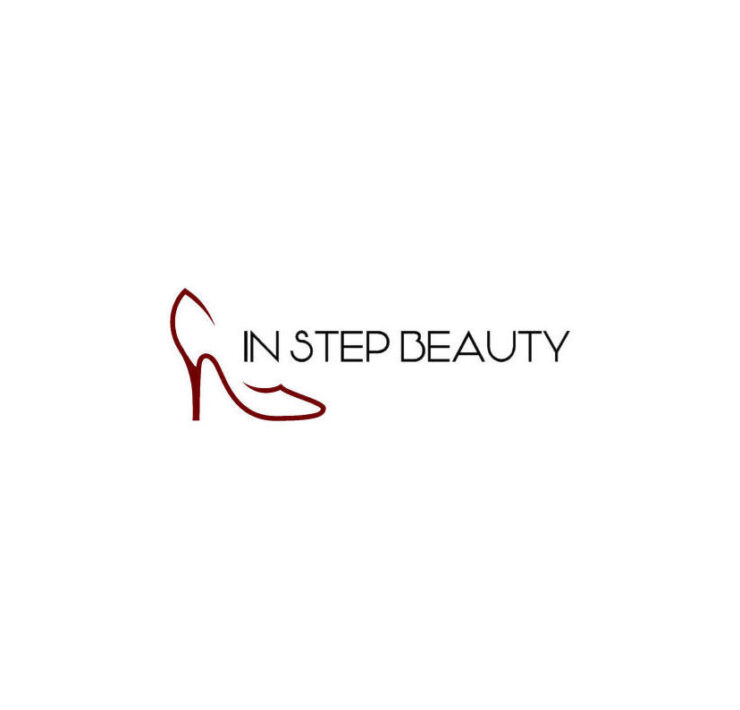The Artist and The Subject: A Reworking Of Working Together

Why It Is
Jeffrey is an established global makeup artist, hair stylist, and perfumier. Kate, an author, marketer, and strategist, worked in the cosmetics industry for nearly eleven years. While Jeffrey is – by definition – the artist for color and skincare, there is value in Kate’s perspective regarding relationships, responses, and results, as there is, of course, in Jeffrey’s. Since 2013, when they first worked together, they have found that it’s easy, encouraged, and effective to change hats and present what they know, based on their individual experiences.
Because everything, regardless of where we learned it, is applicable when we want things to be successful and fun and real.

What It Is
The Artist and the Subject was born of conversations between people who met via work and became friends. Some of their work-related conversations were about subjects that overlapped and aligned, which was surprising, because eye shadows and import taxes don’t have much in common with UX and ghost writing.
Fact: what initially appeared to have to nothing to do with each other actually did. Jeffrey and Kate will present lessons and tactics relevant to beauty, wellness, and working together. And it all began when they talked about stuff.
The Artist and the Subject premieres October 2021 on In Step Beauty.
Chapter 1 – What is the Foundation?
Jeffrey: Welcome to The Artist and the Subject! [applause]
Kate: We’re excited to share with you some of the things we’ve learned when things happen. We learned these things accidentally, and we dig them because, for one thing…
Jeffrey: …We learned them when we didn’t mean to!
Jeffrey: Chapter 1 – What is the Foundation – gets into how to begin and what are the tools and tactics, particularly when someone, or something, needs your help, and they do not want you to be involved. When you’re not invited, you need to find a window of opportunity so you can join the party.
Kate: And by “joining the party,” we mean to correct and prevent something, while providing support and counsel.
Jeffrey: The window of opportunity will appear when the person in question thinks they’ve reached their goal, or they’ve missed the mark.
Kate: Pray tell, Mr. Jeffrey, do you have an example of such a situation?
Jeffrey: As a matter of fact, I do. Join me, won’t you, as we learn how to understand and illustrate the geometry of the face, particularly when someone thinks they know how to highlight and contour. And whether or not you’re making face, these techniques are applicable in everything from cooking at a restaurant to building a website.
Kate: Highlights and contours. These are tricky, even when you understand the shape and size of your face, how pronounced your nose is, and where your cheekbones appear.
Jeffrey: All of those, and you can also highlight the eyelids, the forehead, the jaw, and any number of places on the face.
Jeffrey: The cardinal rule of highlight is to bring attention to something that’s often overlooked. The cardinal rule of contour is to diminish or hide something in order to create depth. Remember that you cannot have a successful highlight without a contour.
Kate: Because a complete face includes highlight and contour, we need to know how to create symmetry with two seemingly opposing tactics.
Jeffrey: Indeed, we do.
Jeffrey: I remember when I was backstage at an awards show and I noticed a celebrity presenter who was made up with excessive shine, and the cheekbone definition was Elvira, not Grace Jones.
Kate: And it’s not like you could say to this known beauty, “Yo. Your face is a wreck, and I can fix that pronto,” even if your intention was kind.
Jeffrey: Exactly. So, my window to jump in consisted of engaging with this actress about something unrelated to the issue, such as a legitimate compliment or an upcoming program where we’d be working together.
Kate: How did you connect with her before she went on camera?
Jeffrey: I gave her a heartfelt compliment about her work that most affected me. From there, she thanked me and asked, “Can you look me over and make sure everything’s okay? Do I look alright?”
Kate: And that happens all the time, I’d imagine, where someone seeks your cosign.
Jeffrey: It does. [smile] I replied, “The light is really strong out there. Let me tone down the shine.” I opted not to tell her that I was also going to soften her contours, because she didn’t need to know every single thing that was wrong. It needed to be corrected quickly, because she was due onstage in seven minutes.
Kate: And she was already being vulnerable with you when she asked “Do I look alright?”
Jeffrey: Exactly. Being a makeup artist, and backstage at a live broadcast, I had close access to tools. So, I grabbed a clean powder puff, and buffed away some of the aggressive contour. Before adjusting the highlights, I looked over her face to analyze its shape, symmetry, and tones.
Jeffrey: What I call the geometry of the face is comprised of the face’s natural symmetry – which consists of bone structure – and the applied symmetry – which is produced by technique and product – and I assess this during every look I make. Obviously, I did that here and I found that the contouring needed a balanced highlight.
Kate: It sounds like the Foundation includes being thorough before you make the change or the correction, because what we think is the recipe may need specific or unexpected seasoning.
Jeffrey: Yes. The Foundation is made up of good intention, paying attention, and thoughtful production.
And with the same puff I’d used to adjust the contour, I harmonized the highlight with the contour so the rhythm of her face was perfect.
Kate: What would you have done – or would you have done anything – had she not asked you if her face was alright?
Jeffrey: I would have hoped and prayed that the cameras didn’t pick up what I saw. Just kidding. I was relieved she saw me and we spoke.
Jeffrey: Had she not asked me to weigh in, I would have gently said, “Let me give your face a quick pat with a tissue, those lights are really hot.”
Kate: It’s useful to have a Plan B.
Kate: So, for everyone who isn’t a celebrity makeup artist, when they have an opportunity to help a friend or colleague who directly or indirectly has told them to keep out, what’s the method?
Jeffrey: First, make you know what you’re talking about, and the experience from which you’re drawing is relevant to the issue at hand. When the actress inquired about her face, I didn’t respond, “Love your hair, and I’ll quickly back comb so its volume sustains.” Relevance is as important as your applied skills.
Kate: Because people can take personally, or make personal, any corrections or repairs to their work, how we present our assistance must be, for lack of a better word, academic. Don’t judge. Observe and identify the opportunities. Present them. When we make it about the product, the program, and the result instead of the person who did not accomplish what they set out to do, they will be more inclined to learn and apply going forward, instead of feeling criticized and deflated.
Jeffrey: And the third ingredient in our Foundation is rely on and have confidence in your expertise, what you know, and what you’ve done. When your intention is not to harm but to help, that will affect what you do and what happens.
Kate: School has been in session, and you did the homework. Period.
Jeffrey: My time with the actress backstage bolstered her confidence, and I was happy to have prevented a makeup malfunction on live television. More importantly, I saw an opportunity to help…
Kate: …and with kindness and grace, you did help.
Jeffrey: Stay tuned for the next chapter of The Artist and the Subject, where we will get into change. It’s not the elephant in the room.
Kate: Thanks so much, and we will see you next month!
Kate Harvie is the Executive Editor and Food & Drink Editor for In Step Beauty. She is the contributing writer and website manager for the Universal Hip Hop Museum, and the author of a book, Believe It and Behave It: How to Restart, Reset, and Reframe Your Life. Follow her on all the social platforms (@glossgal). Jeffrey Paul Aristotle may have had Jeffrey Paul in mind when he said, “Art completes what nature cannot bring to finish.” Jeffrey is an award-winning makeup artist and hairstylist. For 20 years and counting, he is Hollywood’s and Bollywood's go-to artist for celebrities, film festivals, red carpets, fashion, and movie PR. He is a resource for makeup artists, beauty columns fashion & beauty blogs as well as beauty magazines including ELLE, InStyle, Harper’s Bazaar, and beauty how-to books. Additionally, he is a chef, perfumer, writer, wellness advocate, beauty advisor, leader in Sufi and beauty meditations groups, and a practicing Dervish. Jeffrey believes that today's world has prompted everyone to have a deeper reverence for life and nature. His passion for truth, accompanied by an exploration into spirituality, has led him to create a new perspective in the beauty world. Through a blend of aesthetics and wellbeing, Jeffrey created a new paradigm called Beauty as Wellness, which includes the in-development Fragrance as Wellness. Jeffrey teaches people how to look deep into the world of beauty, which includes all types of fragrance, find tools to infuse and support a healthy life. This spiritual adventurer currently lives in Los Angeles. He spends time on the east coast to look after his parents. Follow him on Instagram – @theperfumeyogi, @fragranceaswellness, @jeffreypaulbeauty – and see him being a hair and makeup artist who seeks, and presents, the soulful expression of beauty.




